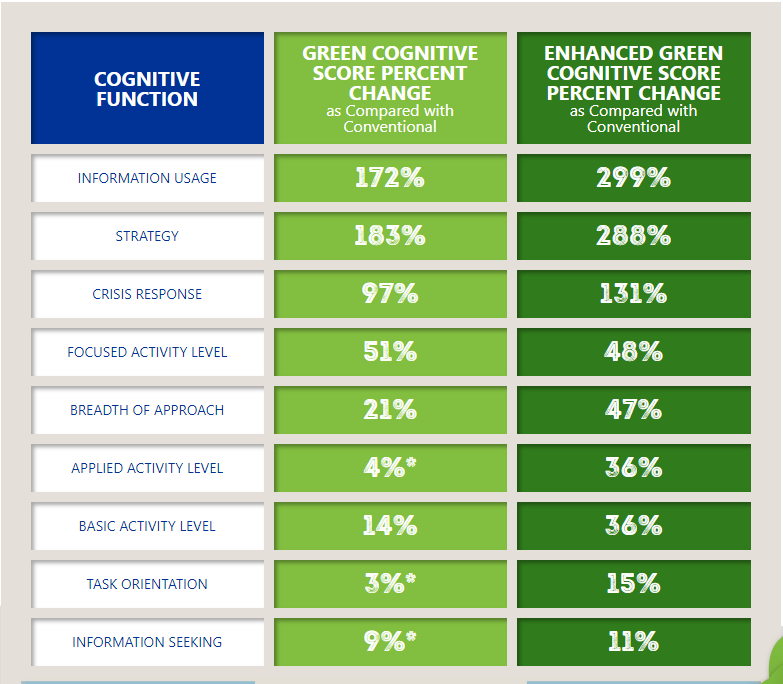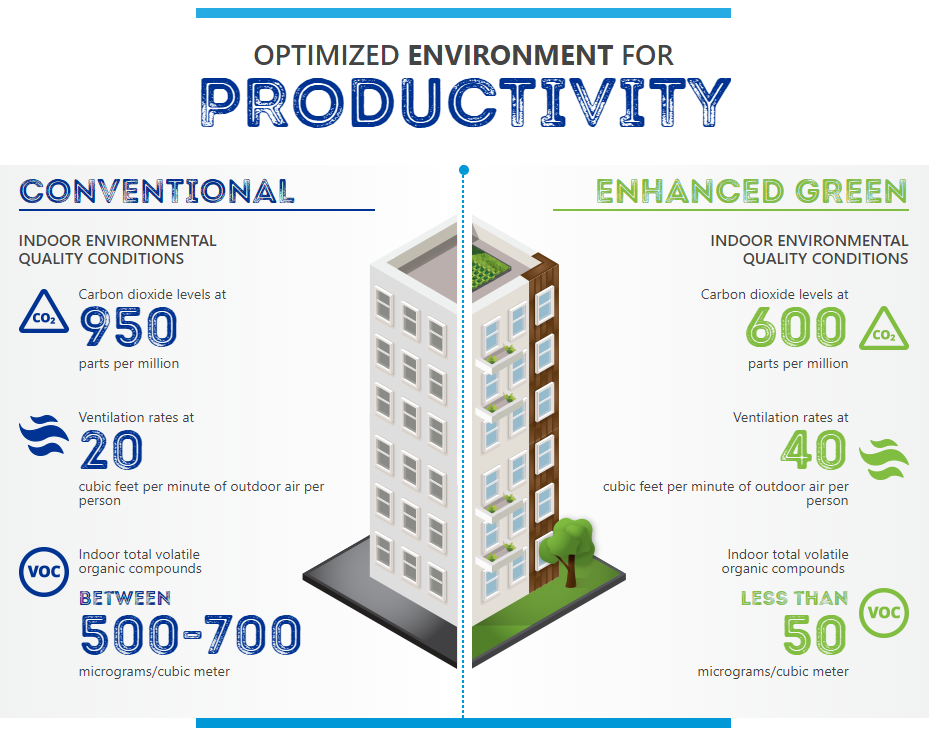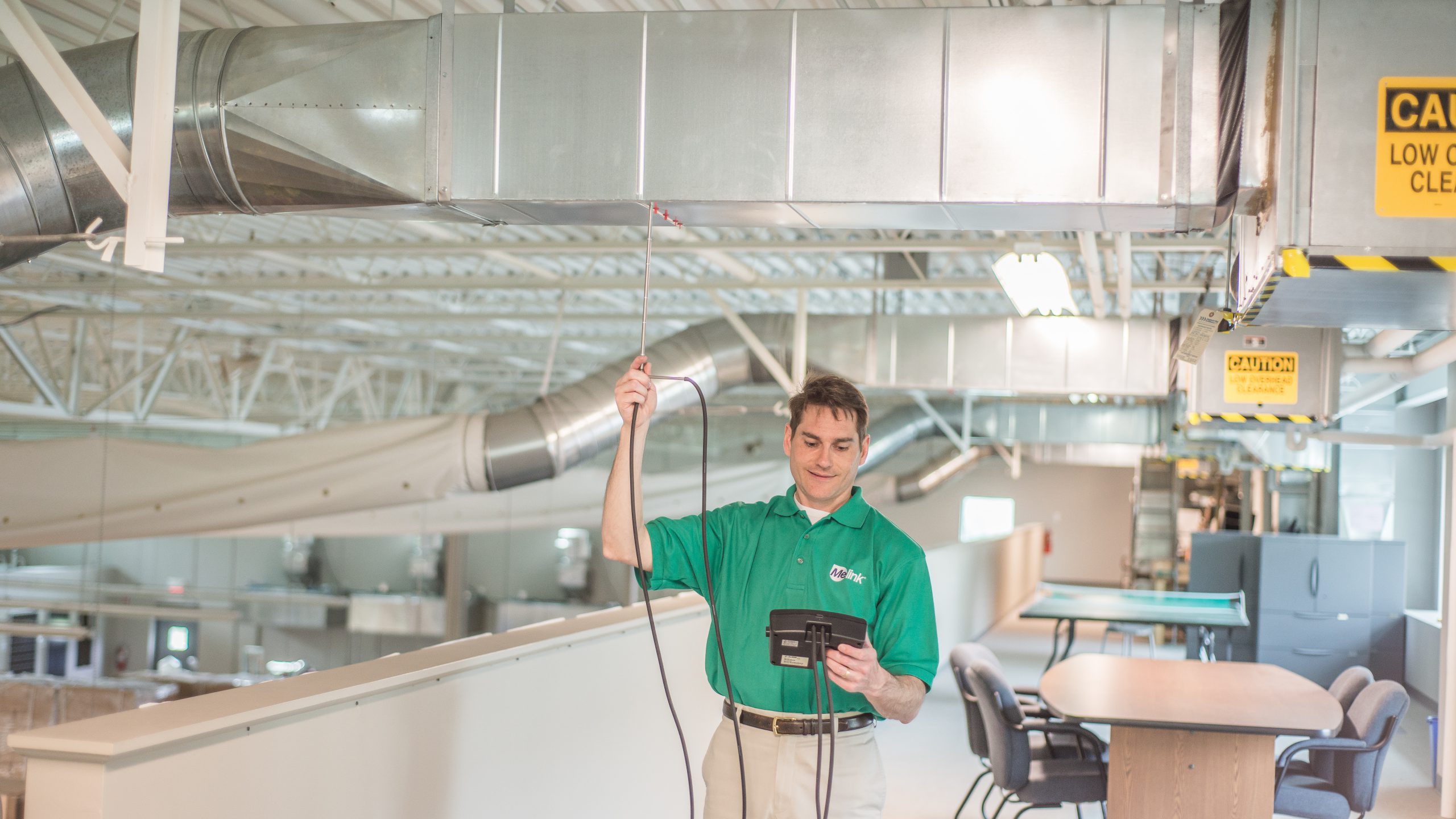Do you want to optimize your employees performance by 299%? Increase cognitive ability in strategy development by 288%?
Yes! Of course, we all would love to fully optimize ourselves and those around us to maximize our potential and impact on the world. What if the answer was all around us, literally allowing us to live, and also invisible. According to new research focused on indoor air quality in the work place, there is a tremendous opportunity to move beyond “green” buildings and ensure we work in “healthy” buildings.

The COGfx Study, while limited to 24 participants, demonstrated that improved indoor environmental quality doubled cognitive testing results in buildings with enhanced ventilation versus conventional buildings. The study distinguished between three building types; Conventional, Green, and Enhanced Green. Within these building types the focus benchmarks were Carbon Dioxide levels in parts per million (ppm), ventilation rates expressed in cubic feet per minute (CFM) per person, and Volatile Organic Compounds (VOC) in micrograms per cubic meter. It’s also worth noting that building used was already a LEED Platinum certified facility, thus there’s likely more room for increased scores when comparing older existing buildings.

The study explores the decrease in energy efficiency, which could be viewed as a negative, however relative to the increase in employee productivity and lost time due to sickness the savings can be dwarfed. The noted increased cost per occupant in energy consumption is $400/year, however the study suggest a 6 x return in sick leave reductions alone relative to the increased energy cost. Factor in the potential for increased productivity for one of the biggest operational cost for any company, the people, and the energy penalty is worth the investment.
While Melink is focused on energy efficiency, we’re also not blind to the impacts of IAQ and built our corporate HQ as a LEED Gold facility, later upgraded to Platinum. In addition to the LEED standards, we also monitor in door CO2 levels via sensors and increase ventilation rates via a HVAC purge sequence once the room exceeds 800 ppm in CO2. On average, the general office area CO2 levels hover around 600 ppm and are aided by the addition of live plants which produced an average drop of 100 ppm in CO2.
This focus on IAQ has led us to the development of a new product, Melink PositiV, to help ensure proper positive building pressure and CO2 levels in commercial buildings. The aim is to provide a simple solution for one of the biggest problems in all buildings, restaurants and retail locations; negative building pressure. The standalone device will monitor pressure, temperature, relative humidity, and CO2 levels and provide a picture of building health and trends.
